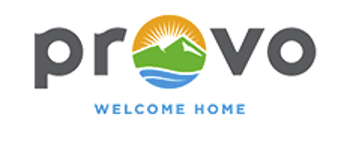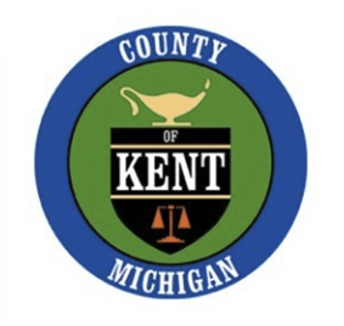For local and regional government organizations, the pandemic highlighted the vital role that community engagement plays in the satisfaction and wellbeing of residents. It became clearer than ever that communication, education, access to services, the opportunity to actively participate in decisions, and the ability to feel heard and valued is critically important to members of a community. As a result, many government leaders are now re-evaluating their community engagement strategies in effort to make them more effective and meaningful.
Free eBook: 2025 Government Trends Report
What makes community engagement meaningful?
Community engagement is a common research practice in government to understand and act on residents’ values, concerns, and aspirations. Community engagement ensures the ideas of community members are used to drive intentional governmental services and systems development, while simultaneously building trust.
In practice, meaningful community engagement is a blend of science and art. The science comes from sociology, public policy planning, political science, organizational development, and other disciplines. The art comes from the understanding, skill, and sensitivity used to apply and adapt the science in ways that fit residents’’ needs and fulfill the purposes of specific engagement initiatives.
Why is community engagement important? Because by committing to act on engagement results, and demonstrating that commitment over time through relationship building and consistent involvement, local government leaders are able to provide accessible opportunities for the entire community to share in the decision making that affects their quality of life.
“Residents have opinions about the government programs that affect them. Gathering a wide range of community input and directing resources to the activities that meet real needs helps build a healthy feedback and action loop.”
– Sydney Heimbrock, Chief Industry Advisor for Government, Qualtrics
Improve community members’ experiences with the right community engagement strategy
Governments practice community engagement to better understand the needs, priorities, and experiences of their residents. Community engagement is important because it helps government leaders:
- Improve resident trust in government
- Design effective programs, services, and policies that meet resident needs
- Prioritize investments by acting on what matters most to residents
- Build relationships with both community leaders and residents overall
- Improve government transparency
- Understand community member needs, sentiments, and priorities
- Incorporate best practices of equity and inclusion
- Increase staff capacity for inclusion, equity, and engagement
- Ensure an inclusive and welcoming community
By the numbers: The impact of community involvement on Americans’ view of government
According to Pew Research:
- About two-thirds of Americans (66%) say they have a favorable view of their local governments, compared with 54% who have a favorable view of their state governments, and just 32% who have a favorable view of the federal government.
- Favorable views of both state and local governments are down slightly since 2019 (5 points and 3 points, respectively).
- Most Americans say the federal government is doing a very or somewhat good job responding to natural disasters (79%), setting fair and safe standards for workplaces (76%), keeping the country safe from terrorism (72%), and ensuring that food and medicine are safe (72%).
- Two-thirds (65%) are satisfied with the way things are going in their local community today, while 34% are dissatisfied.
- 65% say the government is doing too little to address the needs of retired people.
- 65% say that at least some candidates run for office out of a desire to serve the community, but a much larger share (92%) say at least some political candidates seek office as a means of serving their own interests.
5 examples of community engagement strategies in action
Here are five effective strategies, along with real-world community engagement examples from governments who proactively engage residents to design better programs, services, and policies for their community.
1. Community research
Community research projects can gather baseline information about communities, such as demographics, communication preferences, beliefs, etc. to help government leaders understand specific population segments. They can also serve to take a deep dive on a particular topic or research question. This foundational knowledge is key to informing decision making around budgeting, outreach, and program and service development.
The city of for example, uses Qualtrics’ point-and-click survey builder, robust distribution process, and intelligent contact management to request real-time feedback from community members on any topic at any time. Provo residents are taking part in more decisions that affect their community. Additionally, officials have seen a jump in the eagerness of city employees to make an impact because they now have more reliable data at their fingertips.
“We were waiting months for feedback—Qualtrics was this nirvana moment. We can grab real-time information from people and know how they’re feeling about issues.”
– John Curtis, Mayor, Provo City

2. General satisfaction (CSAT) improvement for ongoing service and/or specific programs
These projects focus on gathering resident feedback to identify policies or services that are working well and can be built on, as well as those that need improvement. This can be accomplished in numerous ways, including focus groups, panels, and surveys. The key to getting a representative understanding of service satisfaction is engaging people through a variety of channels that they prefer using.
T in Ontario, Canada, partnered with Qualtrics to formalize a resident feedback program that consistently gathers actionable feedback and standardizes customer satisfaction methods and reporting. The city measures customer satisfaction by conducting both ongoing and ad-hoc feedback collection projects across all service channels, most being 3-5-question surveys with open text response options. The short surveys are distributed via emails, QR codes and on the city website. The city has conducted 25 feedback collection projects to-date across 14 service areas. This has led to 75 recommended improvements, helping the city prioritize resources to the areas that will have the most impact for its residents. The use of open text response options enables the city to uncover unexpected insights that result in actions that meet residents’ specific needs.
“Our feedback collection program allows us to hear directly from our customers after they’ve interacted with us to learn more about how we’re doing and to better understand how they feel about our programs and services. The feedback we’re collecting helps us to prioritize our work so we can make targeted improvements to enhance the customer experience.”
– Christine Baker, Customer Experience Manager, City of Kitchener

3. Supporting communities in times of need
Whether it’s a public health crisis, a natural disaster, or some community issue, governments must have a plan in place for helping residents during times of need. This type of community engagement strategy can include communication, education, access to services, and soliciting input about resident needs.
The pandemic pushed community officials in , to expand community engagement efforts faster than it would have otherwise. County government officials were making real-time decisions affecting residents, and at the same, the community was seeking information and access to public health services. Qualtrics became a key source of information for the county’s COVID response plans. County leaders are now incorporating valuable lessons learned with Qualtrics to improve their approach to community engagement.
“One of the important lessons we learned through the pandemic was that the way we communicate with one constituency is not always successful for everyone. It’s taken time and intention, but we’re reaching more people, our response rates are increasing and our relationship with the community is improving.”
–Lori Latham, Communications Director, Kent County

4. Digital experience engagement
These projects seek feedback from residents regarding their interactions with government on digital channels, including self-serve website transactions, mobile app navigation, and online chats. Understanding digital experience is important, as today’s community members increasingly expect the same level of ease and convenience when interacting with local government as they do with retailers and other private companies.
For example, the National Library of Medicine (NLM ) collects real-time website user feedback using Qualtrics. NLM uses site intercept to ask if content was helpful. Real-time, dynamic feedback – including Qualtrics’ Text iQ to analyze open text remarks – goes to content teams that then triage issues.

5. Improve service to underserved communities
While it’s important for any community engagement strategy to be inclusive of all residents, certain initiatives are aimed specifically at ensuring that programs and services are easily accessible to every resident without discrimination or disparity.
In Los Angeles County, for example, public health officials went above and beyond to engage underserved segments of the community during the pandemic. They launched a comprehensive outreach program – Angelenos in Action – that included multilingual surveys, advertising campaigns, and tracking and reporting to manage the spread of Covid among disadvantaged groups. Because the Qualtrics platform provided them with centralized contact info, direct data collection, and easy-to-understand reports, the county was empowered with near-real-time indicators of the state of COVID in the community.
“COVID-19’s toll has disproportionately affected many vulnerable communities. This data helps us to see trends that can give us better insight into how COVID-19 impacts specific communities and geographic areas. This can help us to prioritize our public health response by helping us understand the health of LA County in real time.”
– Los Angeles County public health official

Leverage a proven community engagement model and process
Qualtrics helps governments at the local, state, and federal levels better serve their communities through a proven community engagement model comprised of five elements:
- Outreach – Educate the public with balanced and objective information.
- Consultation – Obtain feedback on analysis, alternatives, and decisions.
- Involvement – Work with the public to ensure that interests and concerns are consistently understood and considered.
- Collaboration – Partner with the public to identify the preferred solution and develop alternatives.
- Empower – Place final decision-making in the hands of the public.

Build public trust at every touchpoint
The Qualtrics community engagement model doesn’t need to be adopted overnight; it’s a framework we help governments apply to their long-term community engagement strategy. Different engagement efforts will require different tactics along the engagement spectrum. Whether you are trying to get a more representative response with your engagement efforts or launch a new community engagement project, Qualtrics can meet you where you are in your journey.
Free eBook: 2025 Government Trends Report